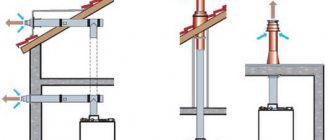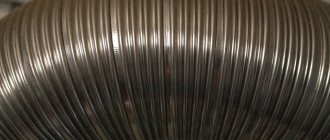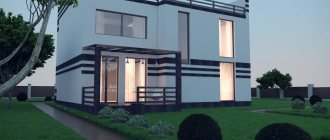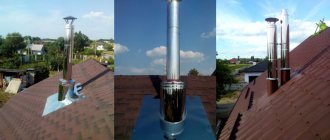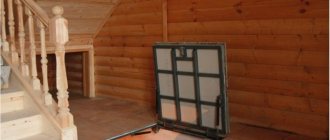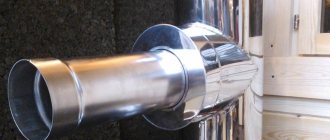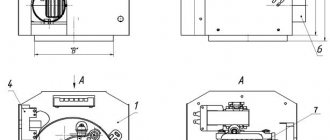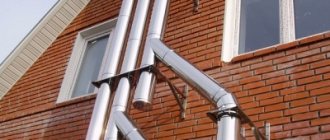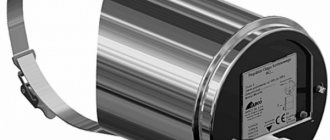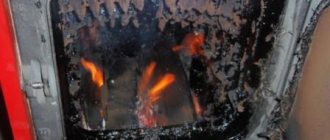Carrot caviar with mushrooms
A very tasty option is carrot caviar with mushrooms. To prepare the preparation, we will use honey mushrooms, which we will first boil in salted boiling water. You need to cook for about half an hour. A sign that honey mushrooms are ready is that the mushrooms will sink to the bottom.
- 1 kg of boiled honey mushrooms;
- 300 gr. carrots;
- 300 gr. onions;
- 4 cloves of garlic;
- 1.5 tablespoons of salt;
- 4 allspice peas;
- 0.5 teaspoon ground black pepper;
- 1 bay leaf;
- 0.5 tablespoon of vinegar essence (70%);
- 70 ml vegetable oil.
Preparation:
- Boil fresh mushrooms, and if we use frozen ones, put them in a colander and pour boiling water over them. Let the liquid drain. Then we pass the mushrooms through a meat grinder or grind them in a blender.
- Peel the onions and carrots, rinse and dry. Cut the onion into small cubes and grate the carrots. Fry the onion in a frying pan until it becomes translucent. Then add the carrots to the onion and continue frying for a quarter of an hour. Stir occasionally during cooking. They should be half cooked. Let the fried vegetables cool and grind them in a blender or using a meat grinder. Do not drain the oil remaining in the pan, but mix it with chopped vegetables.
- In a large saucepan, mix chopped mushrooms and vegetables, add salt, pepper, peppercorns and bay leaf. Add chopped garlic. Cook the caviar for 15 minutes from the moment it boils. Then pour in the vinegar, stir and turn off the heat.
Chimney for ventilation of a gas boiler room
A chimney is one of the most important elements of a competent ventilation system for a boiler room in a private home. Therefore, its design needs to be discussed separately.
SNiP ventilation in the boiler room are also developed for chimneys:
- The chimney does not allow gas and fumes to pass through. No combustion products should enter the air in the boiler room. To increase the tightness of the chimney, some owners plaster it or insert asbestos-cement inside the metal pipe. Its diameter depends on the power of the boiler;
- The chimney pipe must extend beyond the level of the ridge so that the draft is sufficient. The chimney outlet must rise above the roof ridge by 2 - 5 meters, otherwise suction is possible;
- The diameter of the ventilation chimney in a gas boiler room must be larger than the diameter of the chimney of the boiler itself and depends on its power. You can use the following proportions: with a boiler power of 24 kW - diameter 120 mm;
- at 30 kW – 130 mm;
- at 40 kW – 170 mm;
- at 55 kW – 190 mm;
- at 80 kW – 220 mm;
- at 100 kW – 230 mm.
For those who decide to equip the ventilation of the boiler room of their own private home with their own hands, simple rules will help:
- the cross-section of the chimney pipe is indicated in the boiler passport;
- the chimney is made of sheet metal (galvanized or stainless steel). The chimney has a circular cross-section of the same diameter along its entire length and an inspection window for cleaning;
- the chimney should have no more than three turns or bends.
Requirements for installation and installation of chimneys
The efficiency of the heating unit, as well as the safety of those in the heated room, depends on the correct installation of the chimney.
Requirements for chimneys:
- smoke ducts must ensure complete removal of combustion products into the atmosphere (clause 5.1.1.VDPO);
- for each stove and each heating unit, as a rule, a separate chimney should be provided (clause 3.70.SNiP-91);
- the cross-sectional area of the chimney must be no less than the area of the smoke exhaust pipe of the heat-generating apparatus (3.71.SNiN-91);
- metal pipes must be made of specially alloyed, high-quality steel with increased corrosion resistance, with a wall thickness of at least 0.5 mm (GOST);
- to clean soot deposits in the bases of smoke channels, pockets 250 mm deep are made (clause 3.74 of SNiP-91 and clause 5.1.1.VDPO);
- smoke ducts must have no more than three turns, the radius of curvature of which must be no less than the diameter of the pipe (4.2.17.VDPO);
- the height of chimneys along the entire length must be at least 5 m (clause 3.73.SNiP-91). This height provides the necessary resolution and creates traction.
- the height of exhaust ventilation ducts located next to chimneys must be equal to the height of these pipes (5.1.14.VDPO).
Elevation of chimneys above the roof (clause 3.73. SNiP-91)
| At least 500 mm above the roof ridge or parapet, when the pipe is located at a distance of up to 1.5 m from the ridge or parapet. | Not lower than the level of the roof ridge or parapet when the chimney is located at a distance of 1.5 to 3 m from the ridge or parapet. |
| Not lower than a line drawn from the ridge downward at an angle of 10° to the horizon when the chimney is located more than 3 m from the ridge or parapet. | At least 500 mm above a flat roof. |
Smoke channel size
When choosing the size of the smoke duct, it should be taken into account that its diameter must be equal to or greater than the diameter of the smoke outlet pipe of the heat-generating apparatus. Moreover, according to NPB-98, the calculated value of the flue gas velocity in the channel should be in the range from 15 to 20 m/s.
Chimney installation
Installation of chimney elements is carried out from the bottom (from the heat generating apparatus) up. During installation, the inner pipe fits inside the previous one, and the outer pipe fits over the previous one. For better sealing of pipes, it is advisable to use a sealant with an operating temperature of at least 1000° (clause 5.3. GOST). The joints of pipes and other elements (bends, tees, etc.) must be fastened with clamps and must be located outside the ceiling. For every 2 meters of the chimney, it is necessary to install a mounting bracket to the wall, and the tee must have a support bracket.
The elements of chimney systems must also be secured to building structures using brackets. The fastening of connecting pipes must exclude the possibility of deflection (4.2.14. VDPO). Smoke ducts should not come into contact with electrical wiring, gas pipelines or other communications. The distance from the building elements and sheathing when passing the smoke duct through the floors and roof according to SNiP 41-01-2003 clause 6.6.22 should be:
- for pipes with insulation – 150 mm,
- for pipes without insulation – 300 mm.
The chimney should not have horizontal sections longer than 1 m. Chimneys on buildings with roofs made of flammable materials should be equipped with spark arresters made of metal mesh with holes no more than 5x5 mm (clause 3.76. SNiP-91). Building structures made of combustible materials, such as walls, ceilings, beams adjacent to smoke ducts, should be protected from fire by cuttings made of non-combustible materials (clause 3.78-3.79.SNiP-91), or by making setbacks (3.6.14.VDPO) . In accordance with the requirements of SNiP-91 and VDPO, smoke ducts should be placed near internal walls and partitions made of non-combustible materials. However, it is allowed to place smoke ducts in external walls made of non-combustible materials. In the absence of walls, mounted or root pipes should be used for smoke removal (clause 3.69.SNiP-91). If during installation there are sections of the smoke duct passing through unheated rooms or outside the building, such areas must be thermally insulated to prevent condensation of water vapor from the flue gases inside the duct (4.2.16.VDPO).
How to install a gas boiler
Installing a gas boiler is a rather painstaking and time-consuming task, during which it is important to comply with all the rules and procedures for performing all work. The use of absolutely any gas-powered appliance requires compliance with fire safety rules, gas boilers are no exception, therefore the room for installing a gas boiler must be equipped in accordance with all standards, and the installation procedure must in no case be violated. Read: How to choose a parapet gas boiler?
Read: How to choose a parapet gas boiler?
Carrying out preparatory work before installing a gas boiler
Before proceeding with the installation of gas heating boilers, it is necessary to obtain documentary permission, as well as carry out a number of preparatory work.
- It is necessary to sign a contract for individual gas supply for the developer
- Before approving a project for the installation of gas equipment, it is necessary to agree on all technical conditions with the relevant gas service authorities. Often, all developments of projects for the installation of gas boilers are carried out by special services or institutes that have the appropriate license to carry out this type of activity.
- All work on installing gas equipment must be carried out by specialists.
- After installing a gas boiler, it is necessary to obtain a conclusion from a representative of the gas organization that the boiler is connected in accordance with all norms and regulations and is working properly. Only after receiving the conclusion can you begin to use the gas boiler.
- The heating system must be pressurized to P = 1.8, and all connections must be completely sealed.
- Before carrying out installation work on installing a gas boiler, you must ensure that a voltage stabilizer and uninterruptible power supply are installed.
- Under no circumstances should antifreeze get into the heating water, otherwise this will lead to gas leakage and damage to the sealing gaskets.
The boiler room for a gas boiler can be located on any floor of the house, including the basement, basement and attic. The exceptions are living rooms, toilets and bathrooms - it is not recommended to arrange a place for a boiler room in them. Be sure to ensure that the room in which the boiler room will be located, and the gas boiler itself, comply with all fire safety standards and regulations.
To calculate the volume of the room for installing a gas boiler, it is necessary to take into account the total thermal power of both the unit itself and water heaters - instantaneous and capacitive.
Please note that in the technical passport for a gas boiler, the room for installing the boiler must be referred to as a boiler room or furnace room. To calculate the volume of the boiler room, use the data given in the table below. To calculate the volume of the boiler room, use the data given in the table below
To calculate the volume of the boiler room, use the data given in the table below.
However, there are exceptions: for boilers with a closed combustion chamber, the combustion chamber dimensions can be of any size and are not standardized. In addition, for this type of boiler it is not necessary to have a window opening in the room.
For other types, good ventilation is mandatory. Firstly, air is needed to burn at least 2.5 gases per hour; the power of the boiler depends on this. And secondly, if not enough air is supplied, the gas does not burn completely and a substance harmful to health is formed, which, if inhaled within 15 minutes, is fatal.
Read: How to choose a floor-standing gas boiler?
Fire safety of stoves and chimneys
To ensure reliable operation of heating equipment in country houses and country houses, both built-in capital stoves and mobile boilers of various designs are used. Devices are placed taking into account certain rules and requirements. Correct installation and use of heating devices ensure optimal temperature conditions and safe operation during the heating season. Fire safety of the stove in the house and bathhouse is ensured by following the following rules:
1.
Furnace structures must be located near strong walls
made of non-combustible materials.
The optimal location option can be considered an external wall, the outer side of which is insulated with fireproof material. If the walls of the structure are made of flammable elements, then it is necessary to install thermal insulation to ensure the safety of the structure.
2. If the design of the house does not allow the installation of a stove near the main wall, then chimneys of a special design are used.
Among the most common options are main chimney pipes, attached or mounted.
3. One medium-capacity stove design is designed for three adjacent rooms.
The location of the heating device must ensure free circulation of heat flows within the heated premises.
4. If the height of the building is two floors, then it is possible to use stoves made in the form of a two-tier structure.
The product infrastructure will consist of two sets, including smoke shafts and fireboxes. If both floors belong to the same owner and constitute the premises of one apartment, then one firebox is sufficient. In this case, it is located on the first floor.
5. If stoves are used to equip non-residential buildings, for example, medical, administrative or educational institutions, then the location of the fireboxes is arranged in a special way.
They must be accessed from rooms located outside the main locations. Most often, corridors or auxiliary rooms with good ventilation and opening windows are used for this.
Installation requirements: all according to the law
When installing gas boilers, which have become popular due to their inexpensive fuel, requirements are imposed both on the boiler room itself, if the unit is located in a separate non-residential premises, and on the selection of locations for all elements of the ventilation system.
If a domestic gas boiler has a power of more than 30 kW, it must be installed in a separate room. It can be located both in a residential building and outside it
For units whose power exceeds 150 kW, a separate building is erected or an extension is made to a residential building. Next to the boiler room, through the adjacent wall, there should be a non-residential premises.
The rules for ventilation and air conditioning are set out in SNiP 2.04.05-91. The main requirement concerns air exchange, which must be completed in full at least 3 times within an hour.
Be prepared for supervision by gas service representatives, who will definitely check:
- the presence of a solid foundation and concrete floor;
- laid communications - water supply, sewerage, heating pipes;
- insulation of walls and gas outlets to prevent freezing during cold periods;
- area – at least 15 m³;
- ceiling height – 2.2 m and above;
- mandatory natural lighting - a window of at least 3 cm² for each cubic meter of boiler room volume.
To ensure natural ventilation, the window is equipped with a window, and a small gap is left under the front door for the free flow of air - approximately 2.5 cm high. Instead of a gap, door perforation is used - in the lower part adjacent to the floor or threshold, several holes with a diameter of about 2 cm are made .
If the extension door leads into the house, or more precisely, into a non-residential room, then it is made of fire-resistant material with a high fire safety class.
Often, not natural gas, but liquefied gas cylinders are used as fuel. They must not be stored near the boiler.
Another additional room is equipped for the cylinders, and they are connected to the boiler via a fuel supply pipe.
Requirements regarding chimneys and ventilation:
- Gases are removed and air supplied through separate channels;
- the size of the ventilation window for air flow is at least 1/30 of the boiler room area;
- the boiler is installed at a minimum distance from the exit of the chimney pipe and the ventilation shaft;
- if a coaxial chimney is routed through a wall, then two openings are provided: the first - directly for the pipe, the second - for maintenance.
Ventilation ducts installed in a private house for a floor-mounted or wall-mounted gas boiler must always be open so that air circulates constantly.
HOW TO CORRECTLY INSTALL A CHIMNEY INSIDE A ROOM (installation around the house)?
Basic requirements for a chimney when installed through a room
1. The cross-sectional area of the smoke exhaust pipe must be no less than the cross-sectional area of the exhaust pipe in the sauna stove.
2. The first meter of the chimney must be single-walled.
3. The optimal length of the chimney is 5 meters from the stove grate to the top.
4. The collection pipe must be vertical, without ledges. Deviation from the vertical by an angle of no more than 30 degrees is allowed.
5. The horizontal section should not exceed one meter.
Basic rules for chimney installation
— The stove must stand on a platform independent of the structure. This is necessary so that if the foundation of the house subsides, the heating equipment does not “lead” or be destroyed.
— Wooden structures around the perimeter of the furnace are additionally insulated with a fiber cement board and a protective screen made of stainless or galvanized steel.
— The fewer turns, the better the traction.
— A 90-degree rotation can be replaced by 2 x 45 degrees.
— The height of the pipe depends on the proximity of the roof ridge when exiting:
— The chimney must be assembled from below the stove, connecting its segments in series, according to the design, strengthening the connections with crimp clamps (more about them below).
— To prevent air from being sucked in from the outside, all seams must be coated with heat-resistant sealant.
— Excessive weight load is removed by mounting platforms.
This is especially true for thin-walled stainless steel stoves, in which the bottom of the heater can sag due to a heavy “sandwich”!
Installation of chimney passages
The most difficult and critical areas when installing a chimney in a private house or bathhouse are passages through the ceiling, roof or wall. If the house (bathhouse) has several floors, then a passage is added through the interfloor ceilings. It is necessary to provide safe distances between the pipe and combustible materials of building elements.
To install a chimney through wooden ceilings, a decorative ceiling-passage unit (CPPU), which has the form of a square box, is used. Its dimensions depend on the diameter of the chimney. A hole for the pipe is cut in the center of the box.
The space of the box is filled with mineral wool, expanded clay and other heat-insulating materials with heat resistance characteristics of 700 degrees. The top of the structure can be covered with a metal plate - a “PUF element”.
By the way, did you know that UMK’s product range includes a DPPU for passing structures at 45 degrees?
The floor of the upper floor or attic, as well as the ceiling of the lower floor, can be equipped with special metal flanges-overlays, which perform an aesthetic and thermal protective function.
Exiting the chimney to the street through the roof of the house
To do this, it is necessary to make a hole while maintaining safe distances to flammable materials.
There are two ways to protect this passage from precipitation.
Method No. 1. With the help of a metal element called “Roof Passage”, it has a longer service life, unlike the second one.
Method No. 2. Using a silicone “master flush”. It is easier to install, since its silicone base can be adjusted to the angle of your roof and the roofing material without much effort.
ABOUT THE OPERATION OF THE CHIMNEY
At least once every 3 months, a preventive inspection and cleaning of the chimney should be carried out.
Depressurization is indicated by the appearance of soot on the seams and joints of elements. The connections should be sealed, and if necessary, the system should be reinstalled using heat-resistant sealant, replacing faulty elements. It is advisable to clean the chimney mechanically. Products that burn soot can overheat the chimney too much, which will affect its service life.
What to consider when installing a column
Let's consider the basic installation rules that must be observed when carrying out work:
- The room must have a minimum area of 7.5 m2.
- The minimum pressure readings should be 0.1 atm.
- Sufficient ventilation must be ensured.
- The equipment should be installed on a wall that has been protected with non-combustible materials.
- Placement directly above a gas stove is prohibited. A minimum distance of 10 cm must be maintained between such devices.
- A mandatory requirement for installing the device is the presence of a chimney. The diameter of the pipe should be from 120 mm.
- The ceilings in the room must be at least 2 meters high.
- There must be a gas meter in an apartment with a water heater.
Tools required for installation
The device of a classic geyser
To install a gas water heater in an apartment, you need the following tools:
- Adjustable wrenches (two wrenches required).
- Two open-end wrenches (27 by 30 and 32 by 36).
- Sealant. Unipack is perfect.
- Tow or FUM tape.
To carry out installation work, you need to prepare the following materials:
Galvanized pipe, 1 meter long. Often such materials are supplied complete with heating equipment.
- Gas hose (its dimensions are specified in the documentation that comes with the kit).
- A filter designed for rough water purification. Keep in mind that the service life of such equipment directly depends on the quality of the water.
- A rosette ring required to lead out the entrance to the chimney.
- Dowels that will secure the equipment to the wall.
Installation work step by step
When the chimney and water supply are prepared for the installation of equipment, you can proceed directly to its installation. Replacing a gas water heater is carried out in several stages:
Mark the equipment attachment points. Here you should take into account the minimum length of the chimney, which is 50 cm for rooms with a ceiling height of 2 meters and 25 cm - where the ceiling height is 2.7 meters or higher.
Diagram of the correct location of the speaker in the kitchen
- Holes are made in the wall according to the markings.
- Hooks are installed to hold the column.
- Now the device can be hung on the wall.
- We take PVC pipes and connecting rods, through which the pipeline is connected to the inlet and outlet of the column.
The video shows instructions for installing a geyser
Correct connection of the column to gas and water supply
- At the last stage of installation, gas is supplied to the device. To do this, take a flexible hose: one end is screwed to the gas supply valve, and the other to the gas inlet into the column. Next, you need to crimp the connections and treat them with a soap solution to check for leaks.
- We supply gas to the system. If there are no bubbles in the areas with the applied solution, then you can safely put the system into operation.
A correctly installed and ready-to-use geyser
Requirements for chimneys
Most fires in the private sector occur from faulty furnace equipment. Every year before the start of the heating season and monthly during the heating season, it is necessary to check the condition of chimneys, cuttings, flashings, pre-furnace sheets, etc. Chimneys and stoves must be cleaned of soot regularly, since a significant layer of soot deposits (ash, dust, tar) is deposited on the walls of the chimney. . Chimneys are checked in the following way: it is advisable to light the stove during the day in clear weather and inspect the chimneys in the attic space. Where smoke seeps in, there are cracks that need to be eliminated. To ensure that the cracks in the chimney are clearly visible, it should be whitewashed regularly. On a white surface you will easily notice stains of soot coming out with smoke from their cracks. The pre-furnace sheet must be at least 0.5 x 0.7 m in size and its long side should be located along the stove.
When using stove heating, it is prohibited to: • leave burning stoves unattended, and also entrust small children with supervision of them; • place fuel, other flammable substances and materials on the pre-furnace sheet; • use gasoline, kerosene, diesel fuel and other flammable liquids and gas liquids to ignite stoves; • burn furnaces not intended for these types of fuel with coal, coke and gas; • overheat the stoves.
The following fire safety requirements for heating systems are of great importance. Compliance with them guarantees a long life and operation of the equipment and building.
When storing roughage in the attic, the following should be provided: • a roof made of non-combustible materials; • protection of wooden attic floors and flammable insulation from fire from the attic side with clay coating 3 cm thick over flammable insulation (or equivalent fire protection) or non-combustible insulation; • protection of electrical wiring in the attic from mechanical damage; • fencing chimneys around the perimeter at a distance of 1 m.
Ash and slag removed from the furnaces must be spilled with water and removed to a specially designated safe place.
Requirements for chimneys: • The height of chimneys from the grate to the mouth should be at least 5 m. • The height of the part of the chimney protruding above the roof must be at least 0.5 m - above the flat roof and above the ridge of the roof; • Chimney mouths should be protected from precipitation; • Umbrellas, deflectors and other attachments on chimneys must not interfere with the free exit of smoke. • Chimneys for wood and peat stoves on buildings with roofs made of combustible materials should be equipped with spark arresters made of metal mesh with holes measuring no more than 5x5 mm.
Requirements for cuttings: • The dimensions of the cuttings of furnaces and smoke ducts, taking into account the thickness of the furnace wall, should be taken equal to 500 mm for building structures made of combustible materials and 380 mm for structures protected by non-combustible materials; • The cutting must be 70 mm greater than the thickness of the ceiling (ceiling). The furnace section should not be supported or rigidly connected to the building structure; • Cuttings for stoves and chimneys installed in openings of walls and partitions made of flammable materials should be provided for the entire height of the stove or chimney within the premises. In this case, the thickness of the cutting should be no less than the thickness of the specified wall or partition; • Gaps between ceilings, walls, partitions and partitions should be filled with non-combustible materials. Requirements for setbacks - the space between the outer surface of a furnace, chimney or smoke duct and a wall, partition or other building structure: • The distance from the outer surfaces of brick or concrete chimneys to rafters, sheathing and other roofing parts made of combustible materials should not be provided in the light less than 130 mm; • from ceramic pipes without insulation – 250 mm; • for thermal insulation with a heat transfer resistance of 0.3 m2 • °C/W with non-flammable or low-combustible materials – 130 mm; • The space between chimneys and roof structures made of non-combustible and low-combustible materials should be covered with non-combustible roofing materials.
Is ventilation necessary in a gas boiler room?
Even a small amount of carbon monoxide can worsen the well-being of residents. Chronic fatigue, headaches and pain in the eyes are the least that people feel who often inhale combustion products. Leaks of explosive and flammable fuel are no less dangerous.
Poorly designed ventilation not only threatens the life and health of people, but also reduces the performance of equipment.
Operation of a gas boiler is possible with a constant supply of oxygen to the boiler and timely removal of combustion products. When there is not enough air, fuel burns worse. While consuming the same amount of gas, the boiler produces less heat in a poorly ventilated room.
Gas boilers use air from the boiler room. If the boiler room is separated from the main house by wooden unsealed doors or has old-style windows, air entering through the cracks in the frames is sufficient. But if modern windows and doors are installed, air will not come in from outside. When fuel burns in the room, the air will be discharged and the efficiency of the boiler will decrease. The fumes from the boiler can go into the boiler room and from there into the living rooms. Therefore, it is necessary to think about how to ventilate the boiler room.
Ventilation system of the boiler room
In order for the heating device to function as efficiently as possible (and the principle of its operation, we remind you once again, is based on the combustion of gas and the subsequent release of heat), it is necessary that fresh air constantly enter the room, which is extremely necessary to remove the products of fuel combustion. In most cases, in order for the air exchange in the boiler room to reach the required level, ordinary natural ventilation is sufficient. Dilapidated doors and window frames, as well as a number of other places where there are cracks for one reason or another, provide an ample amount of fresh air. But if all this is not enough, since the room is sealed, then it is advisable to take a closer look at the possibility of installing an additional ventilation system. And if this is not done, then the combustion products will remain inside the room, leaving behind traces in the form of soot and soot on all surfaces. Moreover, the unattractive appearance of the furnace is only the least of the problems that will befall you in the absence of proper ventilation.
Natural ventilation
If the power of the heating device does not exceed 30 kilowatts, then to install natural ventilation you simply need to drill 10-15 centimeters holes in the walls and install a plastic pipe of the appropriate size into it - this way we will make a kind of air duct. All that remains is to protect this channel from the penetration of insects and debris from entering it. To do this, we can use a regular mesh made of iron or plastic. In addition, the inside of the duct must be provided with a reverse draft valve, which is necessary to ensure that the air leaves the room. The ventilation hood must be equipped in a similar way; in addition, when exiting, it should be protected from precipitation.
But where is the best place to place the inlet? What do the requirements for a boiler room in a private house tell us about this? They say the following: such a hole should be located next to the firebox, from below. In this case, fresh air will flow directly into the combustion chamber, but will not float throughout the combustion chamber. It is better to equip the hood immediately above the device, because combustion products, as you know, will rise upward.
Artificial ventilation
Not in all cases it is possible to install natural ventilation. After all, it largely depends on weather conditions, and you cannot control its operation in any way. Then it is better to resort to another type of it - artificial ventilation.
Important! The main elements of such a design are fans; they should be selected based on the maximum air consumption the boiler needs, adding another 30 percent to this. Actually, in terms of ventilation we have everything
Actually, we have everything regarding ventilation.
Requirements for chimneys for gas boilers
The chimney for the boiler must meet certain characteristics and standards, otherwise problems will most likely arise in subsequent use. For example, here are the basic rules for a chimney:
The slope that is permitted should in no case exceed 30 degrees, regardless of location. The length for the side “shoots” should not exceed the permissible values, namely 100 cm. It is prohibited to intentionally or arbitrarily make protrusions or ledges in the channel. Sections located transversely are prohibited due to a violation of the drainage system and the passage of draft. The number of tees is no more than three. It is allowed to make curves, but remember that their radius should not be lower than the diameter of the chimneys. In turns, it is better to provide in advance for the installation of special “containers” for collecting condensate, as well as hatches for prevention. In the event that for the chimney they chose to use a channel that is not round, but say oval or even elongated rectangular, then the width of one of the sides should not exceed twice the width of the other side. At the very bottom of the channel there is a “drip tank” and a moisture collector. Even minimal deflections of the system are prohibited. Take into account the fact that when installing several sections, they must be inserted into each other by at least 0.5 whole parts from the original diameter. Any gaps between are prohibited. Please note that in places where it is necessary to install ceilings or in walls, it is prohibited to skip non-solid sections. The connection is made either before or after the pass. The connection must be tight; use additional special tools. Remember one more important factor: the slope of the chimney towards the heat source cannot be more than 0.01 degrees. Do not forget that the inner walls should be as smooth as possible
Even small roughnesses create an obstacle to the passage of soot, which subsequently accumulates there. Consider two rules: the length of the horizontal section for buildings that are still at the construction stage should be no more than 300 cm, for houses already built no more than 600 cm. Also remember that the distance between the pipe and the finishing material, ceiling, if it is not flammable must be more than 250 mm. or 50 mm. if the material is fire resistant. In places where the smoke exhaust duct needs to be routed through the ceiling, high-quality thermal insulation is made.
Height standards
Requirements for the chimney when installing a gas boiler
As you can see, the requirements for chimney channels for gas boilers are quite serious and should not be neglected. In addition to the listed points, there are also special standards for the device regarding height. So:
- If the distance from the pipe installed on the roof to the ridge is more than 300 cm, then you have complied with the standard values. This arrangement is allowed without increasing the height of the chimney.
- At the same level with the ridge, you need to install pipes that are located at a distance of more than 150 cm.
- If the distance is less than 150 cm, it rises to a height of up to 50 cm from the ridge.
In addition, remember the rule: if the roof has a common roof and is flat, the roof top rises at least 50 cm.
Installation guide for the stove and chimney in accordance with SNiP 41-01-2003
Installation and assembly of stoves, fireplaces and chimneys must be carried out by qualified workers of a construction and installation organization in accordance with SNiP 41-01-2003 .
Scheme 1. Installation of the chimney vertically through the roof.
Designations: 1) Thermal insulation; 2) Pre-furnace sheet 3) Cooking oven; 4) Pipe; 5) Gate; 6) Starting adapter; 7) Telescopic bracket; Decorative flange 90°; 9) Decorative flange 45°; 10) Roof penetration; 11) Clamp for joining sandwiches; 12) Sandwich pipe; 13) Clamp for guy wires; 14) Cone-deflector; 15) Thermal insulation of the ceiling.
2) Pre-furnace sheet 3) Cooking oven; 4) Pipe; 5) Gate; 6) Starting adapter; 7) Telescopic bracket; Decorative flange 90°; 9) Decorative flange 45°; 10) Roof penetration; 11) Clamp for joining sandwiches; 12) Sandwich pipe; 13) Clamp for guy wires; 14) Cone-deflector; 15) Thermal insulation of the ceiling.
Scheme 2. Installation of a chimney through a wall.
Designations: 1) Thermal insulation; 2) Pre-furnace sheet 3) Cooking oven; 4) Pipe; 5) Gate; 6) Starting adapter; 7) Decorative flange 90°; Condensate collector; 9) Support bracket; 10) Sandwich tee 90°; 11) Telescopic bracket; 12) Sandwich bend; 13) Sandwich pipe; 14) Clamp for joining sandwiches; 15) Clamp for guy wires; 16) Cone-deflector; 17) Thermal insulation of wall passages.
2) Pre-furnace sheet 3) Cooking oven; 4) Pipe; 5) Gate; 6) Starting adapter; 7) Decorative flange 90°; Condensate collector; 9) Support bracket; 10) Sandwich tee 90°; 11) Telescopic bracket; 12) Sandwich bend; 13) Sandwich pipe; 14) Clamp for joining sandwiches; 15) Clamp for guy wires; 16) Cone-deflector; 17) Thermal insulation of wall passages.
♦ Premises structures should be protected from fire:
- walls or partitions made of combustible materials - plaster 25 mm thick over a metal mesh or metal sheet over asbestos cardboard 10 mm thick, from the floor to a level 250 mm above the top of the stove.
- the floor under the stove is made of flammable materials - a metal sheet (1) on asbestos cardboard 10 mm thick at a distance of 380 mm from the stove wall.
- a floor made of combustible materials in front of the firebox door - a metal sheet (2) measuring 700x500 mm, placed along its long side along the stove.
♦ Make a cut in the ceiling where the chimney passes through it. The cutting should be 70 mm greater than the thickness of the ceiling (H2). The cutting dimensions from the inner wall of the chimney should be taken equal to (L3) 500 mm to structures made of combustible materials and 380 mm to protected structures. Gaps between ceilings, walls and grooves should be filled with non-combustible materials.
♦ The distance from the outer surface of the chimney to rafters, sheathing and other roofing parts made of combustible and low-combustible materials (L2) should be taken in the light of at least 250 mm, and with thermal insulation with a heat transfer resistance of 0.3 sq. m. m x °C/W with non-flammable or low-flammable materials 130 mm.
♦ When installing a chimney in buildings with roofs made of flammable materials, provide the pipe with a spark arrester made of metal mesh with holes no larger than 5x5 mm, and the space around the chimney should be covered with non-combustible roofing materials.
♦ The distance from the firebox door to the opposite wall should be at least 1250 mm.
♦ The distance (H3) between the top of the stove and the unprotected ceiling is at least 1200 mm.
♦ The distance (L4) between the outer surface of the stove, chimney and wall or partition should be at least:
- 500 mm for structures made of flammable materials.
- 380 mm for structures made of flammable materials protected by a metal sheet on asbestos cardboard 10 mm thick or plaster 25 mm thick on a metal mesh.
♦ The distance from the floor to the bottom of the ash pan should be:
- when constructing a ceiling or floor made of flammable and slow-burning materials to the bottom of the ash pit - 140 mm
- when constructing a ceiling or floor made of non-combustible materials - at floor level.
♦ The chimney must have a minimum number of bends. Straight pipe is preferable. It is allowed to provide pipe bends at an angle of 30° to the vertical with a distance of no more than 1 m. The height of chimneys, counting from the grate to the mouth, should be taken at least 5 m. The height of chimneys placed at a distance equal to or greater than the height (H1) of a continuous structure protruding above the roof, the following should be taken:
- at least 500 mm above a flat roof.
- at least 500 mm above the roof ridge or parapet when the pipe is located at a distance (L1) of up to 1.5 m from the ridge or parapet.
- not lower than the ridge of the roof or parapet when the chimney is located at a distance (L1) of 1.5 to 3 m from the ridge or parapet.
- not lower than a line drawn from the ridge downwards at an angle of 10° to the horizon, when the chimney is located from the ridge at a distance (L1) of more than 3 m.
♦ The chimney should be installed above the roof of taller buildings and extensions to the building.
Before installation and operation, you should carefully study the instructions for stoves, fireplaces and chimneys.
Before the heating season and at its end, it is mandatory to carry out a preventive inspection and mechanical cleaning of heating appliances and chimneys.
In our online store “ Stoves Market ”, when ordering any stove for a bath, stove for a home, fireplace stove, boiler, fireplace or cladding, you can also order a qualified installation and/or installation service at the most affordable prices in St. Petersburg and Leningrad Region. Read more…
Add a review
Types of chimneys depending on material
Brick pipe is used very rarely nowadays. To install such a pipe, the construction of a supporting foundation is required. Over time, the brick undergoes destruction from the inside and can allow a certain amount of gases to pass through.
For some interiors, a decorative brick chimney is used, but a stainless steel pipe is laid inside. The operation of a mixed chimney is actually quite effective.
Chimney made of steel pipe
- Single pipe is used for insertion into a brick structure, for repair work or for temporary testing installation.
- A double-wall pipe or sandwich is very often used for a chimney. Its principle is based on the operation of large and small pipes nested one inside the other. The gap between their walls is filled with insulation, which prevents condensation from forming on the walls of the chimney.
- The coaxial version of the chimney is used in those heating systems when combustion requires air supply and smoke outflow at the same time. Chimneys designed for double action have two pipes, as in the double-walled version, only the space between their walls is not filled with insulation, but serves to move fresh air. Smoke is removed along the inner diameter.
https://youtube.com/watch?v=iXYpDw4NjmA
Prefabricated elements for steel chimney of gas equipment
- Connecting adapter couplings for connecting the outlet of a gas boiler and a pipe.
- The main pipes, produced for ease of installation, are 1 m long.
- A tee for cleaning and checking pipe clogging, installed on a horizontal section.
- A tee for collecting condensate, mounted at the point where the chimney turns to a vertical position.
- Angles for turning pipes from a gas boiler.
- Compensator to soften the linear expansion of the chimney when temperature changes.
- A unit for designing a channel exit through the ceiling.
Conditions for the installation of smoke ducts for gas boilers in accordance with SNiP
A separate chimney should be provided for each gas device. As an exception, it is allowed to connect two boilers to this smoke removal system. But this can be done with an interval of 0.75 m from the previous insert.
Ensure mandatory sealing of pipes and their connections to prevent carbon monoxide leakage into the interior of the house.
Take all measures to remove condensate from the pipes. To prevent its formation, it is recommended to insulate the outer sections of the pipes.
The entire length of the internal cavity of the chimney must be free from cluttering objects, dirt and soot. All pollution leads to decreased cravings.
The size of the pipe cannot be smaller than the size of the outlet from the gas boiler; the same width or larger is allowed. A round pipe cross-section is considered ideal, sometimes rectangular or square is possible.
It is not recommended to place various umbrellas and canopies on the top of the chimney on the roof. All of these devices reduce draft and can lead to backdraft under certain weather conditions.
Fire safety rules for stoves
Operation of furnaces in operating mode is only possible if safety measures are taken.
To do this, it is necessary to carry out the correct assembly of the structure, competent maintenance and use. A number of conditions must be met already at the stage of assembly or construction of the device. Fire safety measures when using stoves and preparing them for operation include:
during the construction of the furnace structure, it is necessary to carefully follow the rules of masonry using bricks or special blocks;- the best color for painting is white, which allows you to quickly detect defects in the form of a crack or gap;
- before the start of seasonal operation, it is necessary to carry out maintenance, cleaning and inspection of internal chimneys and containers;
- It is best that the pipes for removing combustion products are vertical, without elbows or ledges, and do not come into contact with flammable elements of building structures;
- before firing the stove, it is necessary to install a metal sheet, the height of the stove legs should not be lower than 100 mm;
- safety rules when firing stoves must be carefully observed;
- furniture, household items, equipment are placed no closer than 70 cm from the heating structure and at a distance of at least 125 cm from the combustion opening.
Added: 01/05/2021

